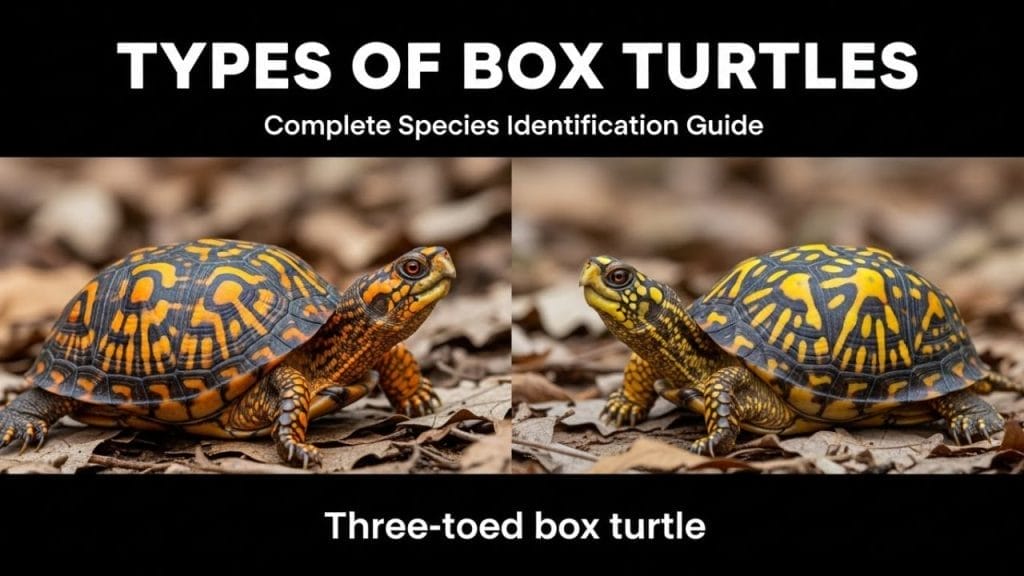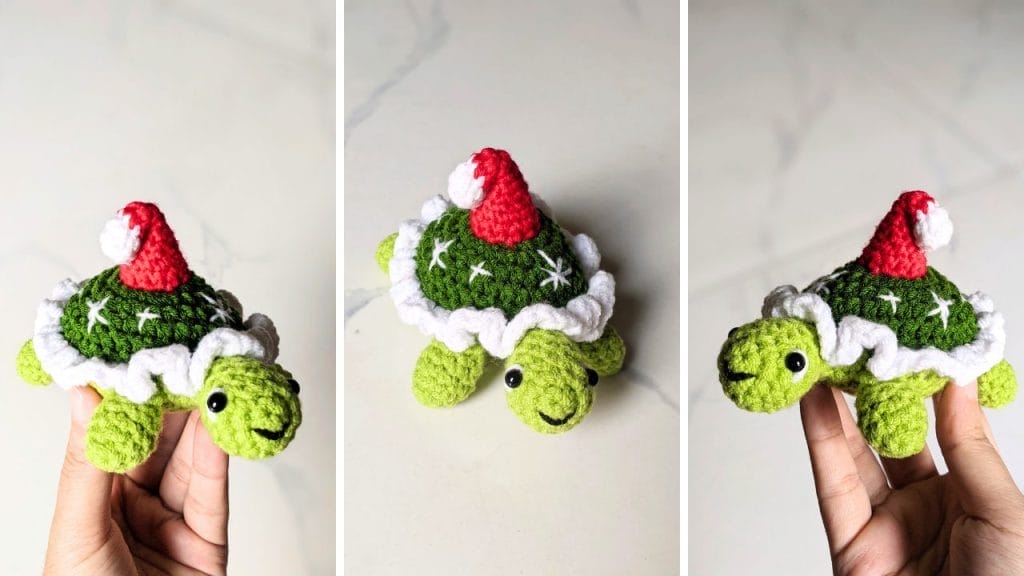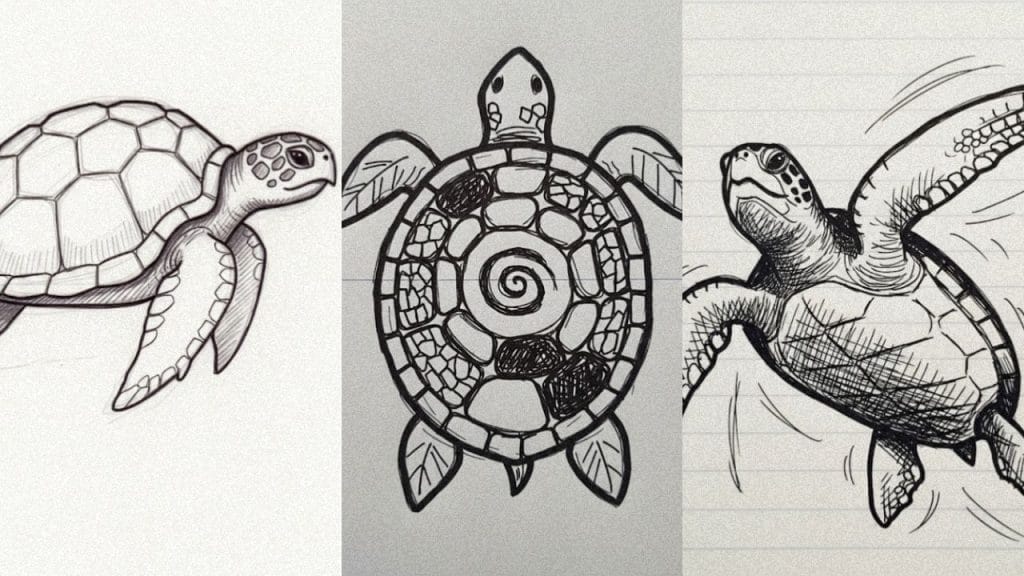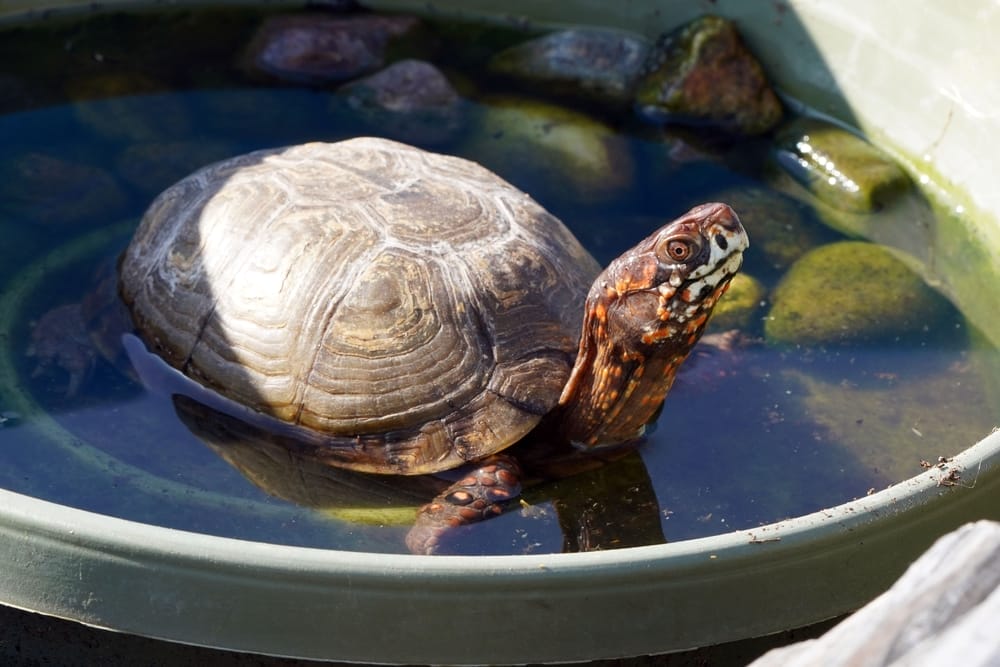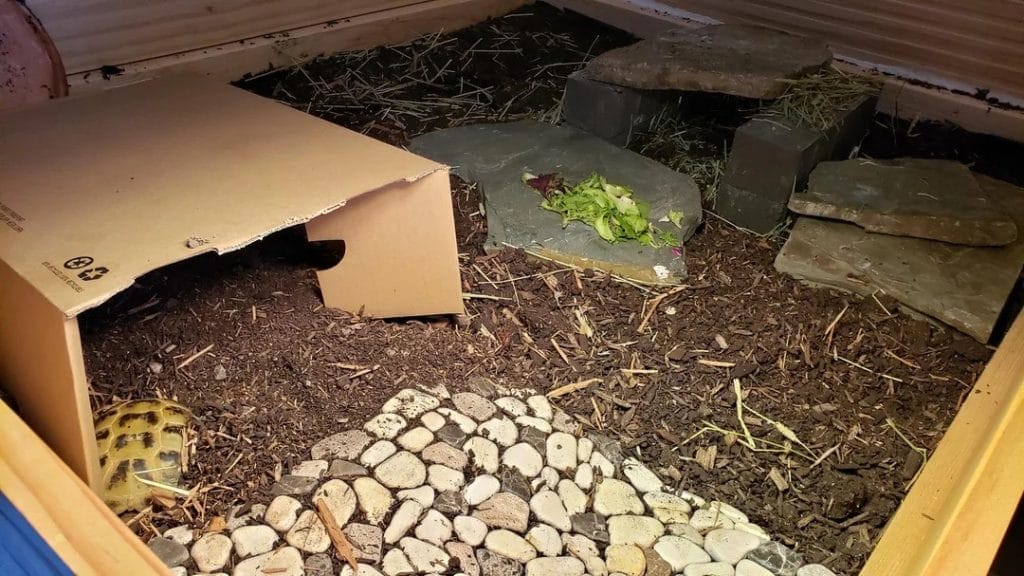How Long Can Turtles Go Without Eating: Complete Fasting Guide by Species

This post was created with help from AI tools and carefully reviewed by a human (Muntaseer Rahman). For more on how we use AI on this site, check out our Editorial Policy.
Turtles can survive without food for varying periods depending on species, age, and health status. Adult aquatic turtles (Red-eared Sliders, Painted Turtles) can go 1-2 weeks without food comfortably, up to 3 months in extreme cases.
Baby turtles can only survive 1-2 weeks maximum without eating. Box turtles and other terrestrial species can last 2-4 weeks. During brumation (hibernation), turtles can survive 3-6 months without food by dramatically slowing their metabolism.
This guide covers fasting tolerance by species, age factors, health implications, vacation feeding solutions, and when to seek veterinary care.
Quick Reference: How Long Can Different Turtles Go Without Food
| Turtle Type | Normal Fasting | Maximum Survival | Brumation Duration |
|---|---|---|---|
| Adult Aquatic (Sliders, Painted) | 1-2 weeks | 2-3 months | 3-5 months |
| Baby Aquatic (under 1 year) | 3-5 days | 1-2 weeks | Should not brumate |
| Juvenile Aquatic (1-3 years) | 1 week | 3-4 weeks | 2-3 months |
| Adult Box Turtles | 2-3 weeks | 3-4 months | 3-5 months |
| Adult Tortoises | 2-4 weeks | 3-6 months | 3-5 months |
| Sea Turtles | 2-3 weeks | 2-4 months | Do not brumate |
| Softshell Turtles | 1-2 weeks | 6-8 weeks | 2-4 months |
| Musk/Mud Turtles | 1-2 weeks | 6-10 weeks | 3-5 months |
Understanding Turtle Metabolism and Fasting
Why Turtles Can Survive Extended Periods Without Food
Turtles are ectothermic (cold-blooded) reptiles with dramatically different metabolic requirements than mammals. This fundamental biological difference allows them to survive extended periods without food that would be fatal to warm-blooded animals.
Slow metabolism: Reptile metabolism operates at a fraction of mammalian rates. A turtle’s resting metabolic rate is approximately 10-20% of a similar-sized mammal. This means turtles require far less energy to maintain basic body functions.
Temperature-dependent energy use: Turtle metabolism directly correlates with environmental temperature. Warmer temperatures increase metabolic rate and food requirements. Cooler temperatures slow metabolism and reduce energy needs. At 50°F or below, some turtle species’ metabolism slows to near-zero, allowing months without food.
Efficient energy storage: Turtles store energy as fat deposits throughout their bodies, particularly around internal organs and within the shell cavity. Well-fed turtles build substantial fat reserves during active seasons that sustain them through fasting periods.
Reduced activity decreases needs: Unlike mammals that maintain constant body temperature through calorie burning, turtles simply become less active when food is scarce. Reduced movement dramatically decreases energy expenditure.
Protein sparing: During extended fasts, turtles preferentially metabolize fat stores while preserving muscle tissue longer than mammals. This adaptation allows survival through seasonal food scarcity.
Factors That Affect Fasting Tolerance
Age and size: Larger, older turtles with substantial fat reserves tolerate fasting much better than small juveniles. Baby turtles have minimal energy storage and high growth-related metabolic demands, making extended fasting dangerous or fatal.
Health status: Healthy turtles with good body condition survive fasting far better than sick, underweight, or stressed individuals. Pre-existing health problems compound rapidly during food deprivation.
Hydration: Water is more critical than food. Turtles can survive much longer without food than without water. Dehydration dramatically shortens survival time during fasting.
Temperature: Cool temperatures (55-65°F) dramatically extend fasting tolerance by slowing metabolism. Warm temperatures (75-85°F) increase metabolic demands and shorten safe fasting duration.
Season and natural cycles: Turtles naturally fast during certain seasons. Pre-brumation fasting, post-brumation recovery periods, and breeding season behaviors all influence normal fasting patterns.
Species variation: Different turtle species evolved in different environments with varying food availability. This creates substantial species-specific differences in fasting tolerance.
Prior nutrition: Well-fed turtles entering fasting with good body condition and fat reserves tolerate food deprivation much better than already thin individuals.

This Hilarious Turtle Book Might Know Your Pet Better Than You Do
Let’s be real—most turtle care guides feel like reading a textbook written by a sleep-deprived zookeeper.
This one’s not that.
Told from the snarky point of view of a grumpy, judgmental turtle, 21 Turtle Truths You’ll Never Read in a Care Guide is packed with sarcasm, sass, and surprisingly useful insights.
And hey—you don’t have to commit to the whole thing just yet.
Grab 2 free truths from the ebook and get a taste of what your turtle really thinks about your setup, your food choices, and that weird plastic palm tree.
It’s funny, it’s honest, and if you’ve ever owned a turtle who glares at you like you’re the problem—you’ll feel seen.
Fasting Tolerance by Turtle Species
Red-Eared Sliders
Normal fasting tolerance: 1-2 weeks
Maximum survival: 2-3 months (adults in cool conditions)
Age considerations:
- Hatchlings (under 6 months): 3-5 days maximum
- Juveniles (6 months-2 years): 1-2 weeks
- Adults (3+ years): 2-4 weeks comfortably, up to 3 months survival
Red-eared Sliders are hardy, adaptable turtles with good fasting tolerance. Adult sliders in good health can comfortably skip 1-2 weeks of feeding without health consequences. This makes them suitable for owners who travel occasionally.
Safe vacation absence: Up to 10 days for healthy adults with proper preparation. Longer absences require pet sitter or automatic feeder.
Warning signs of excessive fasting: Sunken eyes, loose skin around neck and legs, lethargy, floating difficulties, shell problems.
Recovery feeding: After extended fast (2+ weeks), resume feeding gradually. Start with small portions every other day for first week, then return to normal schedule.
Painted Turtles
Normal fasting tolerance: 1-2 weeks
Maximum survival: 2-3 months (adults in cool conditions)
Subspecies considerations: All four painted turtle subspecies (Eastern, Midland, Western, Southern) have similar fasting tolerance.
Painted turtles have metabolic rates and fasting tolerance nearly identical to Red-eared Sliders. They’re hardy turtles that tolerate occasional missed feedings without issue.
Age-specific guidelines:
- Hatchlings: Feed daily, can skip 1-2 days maximum
- Juveniles: Feed daily or every other day, can skip 5-7 days
- Adults: Feed every other day, can skip 2-3 weeks
Seasonal patterns: In northern climates, wild painted turtles naturally fast 4-5 months during winter brumation. Captive turtles kept warm year-round don’t need seasonal fasting but can tolerate it if necessary.
Health monitoring: Check weekly during fasting. If turtle becomes lethargic, stops basking, or floats lopsided, resume feeding immediately and consult veterinarian.
Eastern Box Turtles
Normal fasting tolerance: 2-3 weeks
Maximum survival: 3-4 months (healthy adults)
Terrestrial advantage: Box turtles have slightly longer fasting tolerance than aquatic species due to lower activity levels and terrestrial metabolism.
Box turtles are remarkably resilient regarding food deprivation. Wild box turtles naturally experience periods of food scarcity and adapt by reducing activity and seeking shelter.
Age and size factors:
- Hatchlings (under 1 year): 1 week maximum
- Juveniles (1-5 years): 2 weeks
- Adults (5+ years): 3-4 weeks comfortably
Seasonal considerations: Box turtles naturally reduce food intake in fall before brumation. May fast 2-3 weeks voluntarily during this period even if food is offered.
Dehydration concern: Water is more critical than food for box turtles. During fasting, ensure constant access to soaking dish. Dehydrated box turtles develop sunken eyes and lethargy rapidly.
Recovery protocol: After fasting beyond 2 weeks, resume feeding gradually. Offer highly palatable foods (earthworms, strawberries) in small amounts initially.

Common Musk Turtles (Stinkpots)
Normal fasting tolerance: 1-2 weeks
Maximum survival: 6-10 weeks (adults)
Small turtle considerations: Despite small size (4-5 inches), musk turtles are hardy with surprisingly good fasting tolerance.
Musk turtles are bottom-dwelling carnivores with efficient metabolism. They naturally experience periods without food while waiting for prey to pass by their ambush positions.
Age guidelines:
- Hatchlings: 3-5 days
- Juveniles: 1 week
- Adults: 2-3 weeks
Behavioral changes during fasting: Musk turtles become more sedentary, spending extended periods motionless on tank bottom. This is normal energy-conservation behavior.
Feeding resumption: Start with favorite foods (earthworms, small fish) in small portions. Musk turtles may gorge after extended fasts, but resist overfeeding to prevent digestive upset.
Common Mud Turtles
Normal fasting tolerance: 1-2 weeks
Maximum survival: 6-10 weeks (adults)
Similar to musk turtles: Mud turtles have nearly identical fasting tolerance to their musk turtle cousins.
Mud turtles are more terrestrial than musk turtles and naturally experience seasonal food availability changes. This adaptation gives them good fasting resilience.
Seasonal behavior: Mud turtles may voluntarily reduce food intake during summer in captivity, mimicking wild behavior where they spend more time on land during hot, dry periods.
Weight loss monitoring: Check turtle weight monthly. Weight loss exceeding 5% monthly indicates inadequate feeding or health problems requiring veterinary attention.
Map Turtles
Normal fasting tolerance: 1-2 weeks
Maximum survival: 6-8 weeks (adults)
Caution: Map turtles are more sensitive to water quality and stress than sliders or painted turtles. Extended fasting combined with poor conditions creates higher health risks.
Mississippi Map Turtles and other map turtle species have moderate fasting tolerance but are less forgiving of extended food deprivation than hardier species.
Age factors:
- Hatchlings: Feed daily, 2-3 day maximum fast
- Juveniles: 1 week maximum
- Adults: 2 weeks comfortably
Health considerations: Map turtles stress easily. If fasting is necessary (vacation, etc.), minimize other stressors. Maintain pristine water quality, stable temperatures, and quiet environment.
African Sideneck Turtles
Normal fasting tolerance: 1-2 weeks
Maximum survival: 6-8 weeks (adults)
Tropical species note: African Sidenecks do not naturally brumate and should not experience the extended seasonal fasts that temperate species undergo.
Sideneck turtles are active foragers in the wild, regularly encountering food. They tolerate short-term fasting but not as well as temperate species adapted to seasonal scarcity.
Temperature importance: Sidenecks require warm water (78-82°F) year-round. At these temperatures, metabolism remains elevated and fasting tolerance is shorter than for species that can tolerate cooler temperatures.
Young sidenecks: Juveniles under 2 years should not fast more than 5-7 days. They have high growth-related energy demands.
Softshell Turtles
Normal fasting tolerance: 1-2 weeks
Maximum survival: 6-8 weeks (adults)
Higher metabolism: Softshell turtles are active, fast-swimming predators with higher metabolic rates than other aquatic turtles. This reduces fasting tolerance slightly.
Softshells are specialized carnivores that actively hunt prey rather than scavenging. Their hunting lifestyle means higher energy expenditure and shorter comfortable fasting periods.
Species differences:
- Smooth Softshells: Moderate fasting tolerance
- Spiny Softshells: Similar to Smooth
- Florida Softshells: Slightly less tolerant (larger, more active)
Feeding resumption caution: Softshells are aggressive feeders. After extended fasts, they may attack food violently. Use feeding tongs to prevent accidental bites.

Tortoises (Mediterranean and Russian Species)
Normal fasting tolerance: 2-4 weeks
Maximum survival: 3-6 months (depending on species, size, season)
Herbivore advantage: Tortoise digestive systems are designed for processing high-fiber, low-nutrient vegetation. This efficient system allows longer fasting tolerance than carnivorous turtles.
Species-specific guidelines:
Russian Tortoise: 2-3 weeks normal, 4-5 months maximum (with brumation)
Hermann’s Tortoise: 2-4 weeks normal, 4-6 months maximum (with brumation)
Greek Tortoise: 2-4 weeks normal, 4-6 months maximum (with brumation)
Marginated Tortoise: 3-4 weeks normal, 4-6 months maximum (with brumation)
Seasonal considerations: Many tortoise species naturally reduce food intake in fall and may fast voluntarily for weeks even when food is offered. This is normal pre-brumation behavior.
Hydration critical: Tortoises can survive months without food but only days to weeks without water. During fasting, provide regular soaking opportunities (20-30 minutes in shallow warm water 2-3 times weekly).
Sulcata Tortoises (African Spurred Tortoise)
Normal fasting tolerance: 2-4 weeks
Maximum survival: 3-5 months (large adults with good body condition)
Size advantage: Large adult Sulcatas (80-150 lbs) have enormous fat reserves allowing extended fasting. Small juveniles (under 2 years) should not fast more than 1 week.
Sulcata tortoises naturally inhabit arid African regions where food availability fluctuates seasonally. They’re adapted for boom-and-bust cycles, gorging when food is abundant and fasting during dry seasons.
Age guidelines:
- Hatchlings (under 1 year): 3-5 days maximum
- Juveniles (1-5 years): 1-2 weeks
- Sub-adults (5-15 years): 2-4 weeks
- Large adults (15+ years): 4-8 weeks, up to 5 months survival
Weight monitoring: Large Sulcatas can lose 5-10 lbs during extended fasting without harm. Weight loss exceeding 10% of body weight warrants veterinary consultation.
Leopard Tortoises
Normal fasting tolerance: 2-4 weeks
Maximum survival: 3-4 months (adults)
Similar to Sulcatas: Leopard tortoises inhabit African savannas with seasonal food availability. Fasting tolerance resembles Sulcatas but slightly less extreme due to smaller average size.
Seasonal appetite fluctuations: Leopard tortoises may reduce food intake during cooler months even in captivity. This mimics natural behavior and is not cause for concern unless accompanied by weight loss or illness signs.
Sea Turtles
Normal fasting tolerance: 2-3 weeks
Maximum survival: 2-4 months (species and size dependent)
Migration fasting: Adult sea turtles naturally fast during long-distance migrations. Leatherback sea turtles may fast 3-4 months while swimming thousands of miles to nesting beaches.
Species variations:
Green Sea Turtle: 2-3 weeks normal, 3-4 months maximum (adults during migration)
Loggerhead Sea Turtle: 2-3 weeks normal, 2-3 months maximum
Hawksbill Sea Turtle: 2-3 weeks normal, 2-3 months maximum
Leatherback Sea Turtle: 3-4 weeks normal, 4-5 months maximum (largest size, greatest fat reserves)
Note: Sea turtles are not kept as pets legally. Information provided for educational purposes and rehabilitation context.
Baby Turtles vs. Adult Turtles: Critical Differences
Why Baby Turtles Cannot Fast Long
Baby turtles (hatchlings and juveniles under 1 year) have drastically reduced fasting tolerance compared to adults. Multiple biological factors create this vulnerability:
High growth demands: Young turtles are growing rapidly. Growth requires substantial energy and nutrients. Fasting halts growth and depletes reserves quickly.
Minimal fat stores: Hatchlings emerge from eggs with small yolk reserves that last only days. They accumulate minimal body fat in first months of life. Without fat reserves, fasting quickly becomes life-threatening.
Higher metabolic rates: Young reptiles have proportionally higher metabolic rates than adults to support growth. Higher metabolism means faster depletion of energy reserves during fasting.
Smaller body mass: Small body size means less total energy storage capacity. An adult slider with 10% body fat has far more total calories stored than a hatchling with 10% body fat.
Immune system development: Young turtles have developing immune systems. Malnutrition from extended fasting compromises immunity, increasing disease susceptibility.
Dehydration risk: Small turtles dehydrate faster than large turtles due to higher surface area to volume ratio. Dehydration during fasting is particularly dangerous for babies.
Safe Fasting Times by Age
Hatchlings (0-6 months):
- Aquatic species: 2-3 days maximum
- Terrestrial species: 3-5 days maximum
- Never intentionally fast hatchlings
Young juveniles (6-12 months):
- Aquatic species: 3-5 days comfortable, 1 week maximum
- Terrestrial species: 5-7 days comfortable, 10 days maximum
Older juveniles (1-2 years):
- Aquatic species: 1 week comfortable, 2 weeks maximum
- Terrestrial species: 1-2 weeks comfortable, 3 weeks maximum
Sub-adults (2-3 years):
- Approaching adult tolerance
- Aquatic species: 1-2 weeks comfortable
- Terrestrial species: 2-3 weeks comfortable
Adults (3+ years):
- Refer to species-specific guidelines above
- Substantially longer fasting tolerance than juveniles
Emergency Feeding for Baby Turtles
If baby turtle has not eaten in maximum safe timeframe and shows distress (lethargy, sunken eyes, floating problems), emergency intervention necessary:
Step 1: Assess hydration – Soak turtle in shallow, lukewarm water for 20-30 minutes. Dehydration often precedes and exacerbates feeding problems.
Step 2: Offer highly palatable foods –
- Aquatic babies: Live blackworms, bloodworms, small fish fry
- Terrestrial babies: Live earthworms, mealworms, sweet fruits
Step 3: Adjust environment – Check water temperature (too cool slows appetite), basking temperature, UVB lighting, and water quality. Environmental problems often cause feeding refusal.
Step 4: Veterinary care – If baby turtle refuses food after 24-48 hours of environmental optimization and still within safe fasting window, seek exotic veterinarian immediately. Extended fasting is medical emergency in baby turtles.
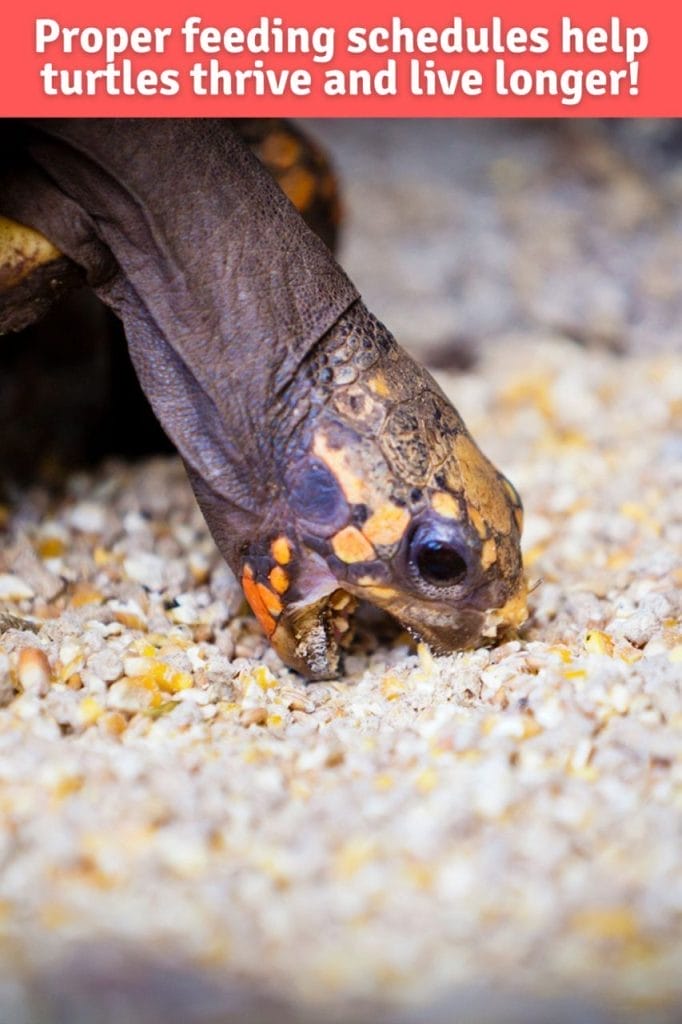
Brumation (Hibernation) and Extended Fasting
What Is Brumation?
Brumation is the reptile equivalent of mammalian hibernation. During brumation, turtles enter a state of dormancy with drastically reduced metabolic rate, heart rate, breathing rate, and activity level. This allows survival through months without food or limited oxygen availability.
Temperature trigger: Brumation is triggered by cooling temperatures, typically when water/air temperature drops below 50-55°F and shortening day length signals seasonal change.
Metabolic slowdown: During brumation, turtle metabolism may decrease to 5-10% of normal active rate. Energy requirements become minimal, allowing survival on stored fat reserves for months.
No feeding: Turtles do not eat during brumation. Digestive system essentially shuts down. Any food in digestive tract at brumation onset may rot, causing potentially fatal infections.
Limited breathing: Brumating turtles underwater can absorb oxygen through specialized tissues in throat and cloaca. This allows months underwater without surfacing to breathe.
Natural vs. captive brumation: Wild turtles naturally brumate in winter. Captive turtles can be kept active year-round with artificial heat/light or allowed to brumate in controlled conditions.
Brumation Duration by Species
Temperate aquatic turtles (Sliders, Painted, Map, Musk, Mud):
- 3-5 months in northern climates
- 2-3 months in moderate climates
- May not brumate in southern climates
Box turtles:
- 3-5 months depending on latitude
- Essential for breeding success in many cases
Tortoises (Russian, Hermann’s, Greek):
- 3-5 months depending on species and climate
- Some species require brumation for long-term health
Tropical species (African Sideneck, Pink-bellied Sideneck):
- Do not naturally brumate
- Should not be cooled below 70°F
Sea turtles:
- Do not brumate
- Remain active year-round in tropical waters
Preparing Turtles for Brumation Fasting
Proper preparation is essential for safe brumation:
6-8 weeks before brumation: Begin feeding high-quality, nutrient-dense foods to build fat reserves. Increase feeding frequency if needed.
2-3 weeks before brumation: Begin cooling process gradually. Reduce temperature 5°F per week. Reduce photoperiod to 8-10 hours.
1-2 weeks before brumation: Stop feeding completely. This allows complete evacuation of digestive system. Turtle must have empty stomach before entering brumation.
Final week: Continue cooling to target brumation temperature (40-50°F for most species). Provide shallow water for hydration but no food.
During brumation: Check turtle every 2-4 weeks. Ensure hydration by misting or providing access to water. Temperature should remain stable at 40-50°F. No feeding.
Ending brumation: Gradually warm turtle over 1-2 weeks. Resume normal photoperiod. Once fully warm, offer food. Expect 1-2 weeks before normal appetite returns.
First-Time Brumation Warning
First-time turtle owners should NOT attempt brumation without extensive research and ideally veterinary guidance. Incorrect brumation can kill turtles through:
- Incomplete digestive evacuation (gut rot)
- Dehydration during dormancy
- Temperature fluctuations
- Premature warming
- Respiratory infections
Many captive turtles thrive without ever brumating if kept warm year-round. Brumation is optional for pet turtles in most cases.
Health Implications of Extended Fasting
Short-Term Fasting (1-2 Weeks)
Healthy adults: No significant health impacts if turtle has good body condition entering fast. Slight weight loss expected (2-5% body weight).
Effects:
- Reduced activity level (energy conservation)
- Decreased defecation (digestive system clears)
- Continued basking (thermoregulation still necessary)
- Potential appetite surge when feeding resumes
No intervention needed for healthy adults fasting 1-2 weeks. This is within normal tolerance for most species.
Medium-Term Fasting (2-6 Weeks)
Healthy adults: Noticeable effects but typically not dangerous if turtle entered fast with good body condition.
Effects:
- Moderate weight loss (5-10% body weight)
- Fat reserve depletion
- Reduced muscle mass
- Lethargy and reduced basking
- Weakened immune system
- Slower wound healing
Intervention: Feed gradually when resuming. Small meals every other day for first week, then normal schedule. Monitor for illness signs as weakened immunity increases infection risk.

Long-Term Fasting (6+ Weeks)
Survival mode: Turtles fasting beyond 6 weeks enter survival mode with serious health implications.
Effects:
- Severe weight loss (10-20% body weight)
- Muscle wasting (protein catabolism)
- Organ function impairment
- Severe immune suppression
- Vitamin/mineral deficiencies
- Potential permanent organ damage
- High mortality risk
Recovery: Requires careful veterinary-supervised refeeding protocol. Rapid refeeding after extreme fasting can cause refeeding syndrome (dangerous electrolyte imbalances). Recovery may take months with permanent health consequences.
When long-term fasting is safe: Only during properly managed brumation in species adapted for it. Otherwise, fasting beyond 6 weeks is medical emergency.
Warning Signs of Excessive Fasting
Seek veterinary care immediately if fasting turtle shows:
Severe lethargy: Complete lack of responsiveness, no movement when handled
Sunken eyes: Deep hollows above eyes indicate severe dehydration
Loose skin: Wrinkled, loose skin on neck and legs indicates significant weight loss and dehydration
Floating problems: Inability to submerge properly or floating lopsided suggests weakness or organ problems
Respiratory distress: Open-mouth breathing, wheezing, mucus from nose/mouth
Shell problems: Soft spots on shell, discoloration, foul odor (indicates metabolic bone disease or shell rot from malnutrition)
Refusal to bask: Healthy turtles still bask during fasting. Refusal suggests serious illness.
Cold limbs: In warm environment, cold limbs indicate circulatory problems.
Weight Loss Monitoring
Track turtle weight during any fast exceeding 1 week:
Safe weight loss: 1-2% body weight per week
Concerning weight loss: 3-5% body weight per week
Dangerous weight loss: 5%+ body weight per week
Example: 500-gram turtle safely loses 5-10 grams per week. Loss of 15+ grams weekly indicates problem.
Weigh turtle weekly during fasting. Use digital kitchen scale accurate to 1 gram. Weigh at same time of day (morning before feeding/after defecation if fed).
Vacation and Travel: Managing Feeding Absences
Short Absences (3-7 Days)
Adult turtles: No special preparation needed. Healthy adults easily tolerate 3-7 day fasting.
Pre-departure:
- Feed normally up to day of departure
- Ensure fresh, clean water
- Verify all equipment (filter, heater, lights) functioning properly
- Set lights on timer for consistent photoperiod
No feeding during absence. Do NOT overfeed before leaving or use “feeder blocks” which pollute water and provide inadequate nutrition.
Baby/juvenile turtles: Require feeding. Arrange for pet sitter to feed every 2-3 days.
Medium Absences (1-2 Weeks)
Adult aquatic turtles: Can survive without feeding if healthy and well-fed beforehand.
Pre-departure preparation:
- Week before departure: Offer extra feedings to build reserves
- Massive water change (50-75%) day before departure
- Clean filter thoroughly
- Leave instructions for emergency contact (exotic vet phone number)
- Consider automatic feeder for longer end of range (10-14 days)
Pet sitter option: Preferred for absences approaching 2 weeks. Sitter feeds 2-3 times during your absence (every 3-4 days). Simpler than daily feeding, still provides nutrition.
Baby/juvenile turtles: Require pet sitter. Cannot safely fast 1-2 weeks.
Long Absences (2+ Weeks)
All turtles: Require pet sitter for absences exceeding 2 weeks.
Pet sitter instructions:
- Written feeding schedule with exact amounts
- Photos of correct portion sizes
- Emergency vet contact information
- Daily tasks: check temperatures, observe turtle
- Weekly tasks: partial water change (20-30%)
- What constitutes emergency requiring vet visit
Automatic feeders: Can supplement pet sitter but not replace entirely. Limitations include:
- Cannot perform water changes
- Cannot monitor health
- May malfunction
- Not suitable as sole feeding method for 2+ weeks
Professional pet sitters vs. friends/family: Professional reptile-experienced pet sitters preferred for extended absences. Proper turtle care requires knowledge many well-meaning friends lack.
Automatic Feeder Options
Types:
Timer-controlled gravity feeders: Dispense pellets at scheduled times. Best for adult turtles on pellet-based diets. Cannot provide fresh vegetables, live food, or varied diet.
Rotary feeders: Sealed compartments that rotate open at scheduled times. Can hold different foods but typically not suitable for fresh vegetables or live food.
DIY ice cube method: Freeze commercial turtle food or chopped food in ice cubes. Place several cubes in tank before departure. They melt over hours/days, releasing food slowly. Suitable for 3-5 day absences only.
Limitations:
- Cannot replace complete diet
- Risk of overfeeding/underfeeding if mechanism fails
- Cannot provide fresh vegetables daily
- Water quality degradation if excess food not eaten
- Not suitable for baby turtles requiring live food
Best use: Backup for pet sitter or supplement during 1-week absences for adult turtles.
Common Fasting Scenarios and Solutions
Turtle Stopped Eating After New Home
Cause: Stress from new environment. Common when turtle is first acquired or moved to new tank.
Timeline: Normal for turtle to refuse food 3-7 days after major change. Some turtles refuse food 2-3 weeks in new homes.
Solution:
- Minimize disturbances. Limit handling.
- Ensure proper temperature (water 75-80°F, basking 85-90°F)
- Verify UVB lighting present and functional
- Provide hiding spots to reduce stress
- Offer favorite foods rather than new foods
- Wait 1 week before worrying
- If no eating after 2 weeks, consult veterinarian
Turtle Stopped Eating Seasonally
Cause: Natural seasonal appetite fluctuations. Many temperate species reduce food intake in fall/winter even in captivity.
Timeline: Typically occurs September-November as days shorten. May last weeks or months.
Solution:
- Normal behavior if turtle otherwise healthy
- Continue offering food 2-3 times weekly
- Monitor weight (should remain stable)
- Ensure water temperature adequate (not too cool)
- Increase photoperiod with artificial lighting may stimulate appetite
- If significant weight loss, consult veterinarian
Breeding Season Appetite Loss
Cause: Male turtles often reduce or stop eating during breeding season due to hormonal changes and courtship focus.
Timeline: Spring (March-June) for most species.
Solution:
- Normal behavior for adult males
- Continue offering food
- Monitor for weight loss
- Ensure adequate hydration
- Appetite typically returns after breeding season ends
Illness-Related Fasting
Cause: Many illnesses cause appetite loss: respiratory infections, parasites, metabolic bone disease, organ failure.
Distinguishing from normal fast: Illness-related fasting accompanied by other symptoms:
- Lethargy beyond normal
- Respiratory symptoms (wheezing, mucus, open-mouth breathing)
- Floating problems
- Visible swelling or wounds
- Eye problems (swollen shut, discharge)
- Shell problems (soft spots, discoloration)
Solution: Seek veterinary care immediately. Do not wait for turtle to “snap out of it.” Reptile illnesses progress rapidly and become untreatable if delayed.
Post-Brumation Fasting
Cause: After emerging from brumation, turtles may not eat for 1-3 weeks as digestive system and metabolism restart.
Timeline: Normal for turtle to show no interest in food for 7-14 days after full warming from brumation.
Solution:
- Ensure turtle fully warmed to normal active temperature
- Offer small amounts of favorite foods
- Soak terrestrial turtles in warm water to stimulate digestion
- Appetite typically returns naturally within 2-3 weeks
- If no eating after 3 weeks post-brumation, consult veterinarian
Female Egg-Binding
Cause: Female turtles carrying eggs may lose appetite. If unable to find suitable nesting site or if eggs are retained abnormally, appetite loss continues.
Distinguishing signs:
- Gravid (pregnant) female appearance: swollen rear legs, restless behavior
- Digging behavior but not laying
- Complete appetite loss for 2+ weeks in spring/summer
Solution:
- Provide nesting box with suitable substrate
- If no nesting after 2 weeks of digging behavior, seek veterinary care
- Egg-binding is medical emergency requiring veterinary intervention
Feeding Resumption After Extended Fasting
Gradual Reintroduction Protocol
After fasting exceeding 2 weeks, gradual feeding resumption prevents digestive upset and refeeding complications.
Week 1: Minimal feeding
- Days 1-3: Offer small portion (25% normal serving) every other day
- Days 4-7: Offer moderate portion (50% normal serving) every other day
Week 2: Progressive increase
- Days 8-10: Offer 75% normal serving every other day
- Days 11-14: Return to normal serving size every other day
Week 3+: Normal schedule
- Resume normal feeding schedule (daily for juveniles, every other day for adults)
Monitor closely:
- Defecation: Normal stools indicate digestive system functioning properly
- Activity: Increasing activity level indicates good recovery
- Weight: Should begin gaining weight
- Appetite: May be excessive initially (resisted temptation to overfeed)
Highly Palatable Recovery Foods
Encourage eating after extended fast with favorite, highly palatable foods:
For carnivorous/omnivorous aquatic turtles:
- Live blackworms (usually irresistible)
- Live earthworms
- Small live fish (guppies, mosquito fish)
- Dried shrimp rehydrated
- Bloodworms (frozen/freeze-dried)
For box turtles and omnivores:
- Live earthworms
- Ripe strawberries
- Mealworms
- Banana pieces
- Cooked chicken (small amounts)
For herbivorous tortoises:
- Dandelion flowers (favorite of many tortoises)
- Hibiscus flowers
- Fresh grasses
- Soft fruits (melon, berries)
- Young, tender greens
Avoid immediately after fast: Hard-to-digest foods like large chunks of raw vegetables, tough greens, or excessive amounts of protein.
When to Seek Veterinary Care
Consult exotic veterinarian if:
Turtle refuses food for duration exceeding safe fast for age/species
- Adults: 4+ weeks for most species
- Juveniles: 2+ weeks
- Hatchlings: 1+ week
Signs of illness accompany fasting:
- Lethargy, weakness, sunken eyes
- Respiratory symptoms
- Floating problems
- Shell or skin problems
- Significant weight loss
- Turtle won’t resume eating after extended fast despite offering palatable foods
- Post-brumation appetite doesn’t return within 3 weeks
- Any concerns about turtle’s health status
Emergency veterinary care needed immediately if:
- Turtle unresponsive or extremely lethargic
- Respiratory distress (gasping, severe wheezing)
- Turtle floating unable to submerge
- Severe weight loss (20%+ body weight)
- Convulsions or seizures
Frequently Asked Questions
How long can a turtle go without food?
Adult aquatic turtles can safely go 1-2 weeks without food, up to 2-3 months in extreme survival situations. Baby turtles can only survive 3-7 days maximum without eating.
Box turtles and tortoises can last 2-4 weeks comfortably. During brumation, turtles can survive 3-6 months without food by dramatically slowing metabolism.
Can turtles survive a week without food?
Yes, healthy adult turtles easily survive one week without food with no health consequences. Juvenile turtles over 6 months can also survive one week, though this approaches their safe fasting limit.
Baby turtles under 6 months should not fast for a full week and require feeding every 2-3 days minimum.
How long can baby turtles go without eating?
Baby turtles (hatchlings under 6 months) can only go 2-5 days maximum without eating, depending on species. Aquatic baby turtles should not fast more than 2-3 days.
Terrestrial baby turtles can manage 3-5 days maximum. Extended fasting is dangerous or fatal for baby turtles due to minimal fat reserves and high growth-related energy demands.
Can I leave my turtle without food while on vacation?
Healthy adult turtles can be left 3-7 days without food safely. For 1-2 week vacations, adult turtles survive but pet sitter or automatic feeder recommended for absences approaching 2 weeks.
Vacations exceeding 2 weeks require pet sitter for all turtles. Baby and juvenile turtles need pet sitter for any absence exceeding 3-5 days.
Why won’t my turtle eat?
Common reasons include: environmental stress (new home, wrong temperature), seasonal appetite reduction (fall/winter), breeding season behaviors (spring), illness (respiratory infection, parasites, metabolic bone disease), post-brumation recovery period, or egg-binding in females.
Check environmental parameters first, then consult veterinarian if refusal exceeds safe fasting duration or accompanied by illness signs.
Do turtles need to eat every day?
Baby turtles under 1 year need daily feeding. Juvenile turtles (1-3 years) should be fed daily or every other day depending on species.
Adult turtles typically need feeding only every other day or 3-4 times weekly. Overfeeding is more harmful than underfeeding for adult turtles.
How long can turtles go without water?
Aquatic turtles can survive only 12-24 hours out of water before dehydration becomes life-threatening.
Turtles need water far more urgently than food. Box turtles and other terrestrial species can survive several days without soaking but need water dish access for drinking and should soak at least weekly.
Can turtles die from not eating?
Yes, extended fasting eventually causes death through starvation, though timeline varies by species, age, and health status. Baby turtles can die within 1-2 weeks without eating. Adults may survive 2-3 months but will die if fasting continues beyond their reserves.
Death results from organ failure, severe malnutrition, and complete depletion of energy reserves.
How do I know if my turtle is starving?
Warning signs include: severe weight loss visible through loose skin, deeply sunken eyes, lethargy and lack of movement, floating problems or inability to swim normally, refusal to bask, cold limbs in warm environment, protruding bones (especially hip bones in plastron), and complete lack of defecation for weeks. Seek immediate veterinary care if these signs present.
What happens during brumation if turtles don’t eat?
During brumation, turtles’ metabolism slows to 5-10% of normal rate, dramatically reducing energy requirements.
They survive on stored fat reserves built during active season. Heart rate, breathing, and all body functions slow. This allows survival for 3-6 months without food. It’s a controlled survival state rather than true starvation.
Conclusion
Understanding how long turtles can go without eating requires considering species, age, health status, and environmental conditions.
While adult turtles demonstrate impressive fasting tolerance—particularly during seasonal brumation—this ability should not be mistaken for license to neglect feeding schedules.
Baby and juvenile turtles have drastically shorter safe fasting windows and require consistent feeding for proper growth and development.
Adult turtles in good health can tolerate 1-2 week fasts during vacations or temporary circumstances, but prolonged fasting beyond 4-6 weeks outside of proper brumation creates serious health risks.
The key to responsible turtle ownership is providing consistent, appropriate nutrition during active seasons while understanding natural seasonal appetite fluctuations.
When fasting occurs due to illness, environmental stress, or seasonal behavior, monitoring weight and health parameters ensures problems are caught early.
For vacation planning, understanding your specific turtle species’ fasting tolerance allows appropriate arrangements—from short trips requiring no special preparation to extended absences requiring pet sitters.
With proper knowledge and preparation, turtle owners can manage feeding gaps safely while maintaining their pets’ long-term health.
Related Articles
17 Best Pet Turtles: Complete Species Guide
Red-Eared Slider Complete Care Guide
Box Turtle Diet and Feeding Guide
How Long Can Turtles Hold Their Breath Underwater

About Author
Muntaseer Rahman started keeping pet turtles back in 2013. He also owns the largest Turtle & Tortoise Facebook community in Bangladesh. These days he is mostly active on Facebook.


